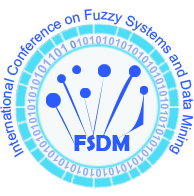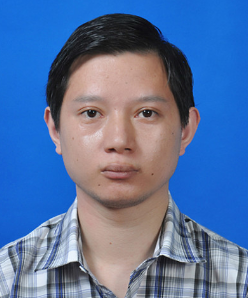Invited Speakers
Dr. Shuyin Xia, Professor
Chongqing University of Posts and Telecommunications, ChinaSpeech Title: Granular-ball computing: an adaptive, efficient, robust, interpretable method for multi-granularity representation and intelligent computing
Abstract: The method of multi-granularity granular-ball computing is proposed based on the theory of multi-granularity cognitive computing. The theory uses granular-balls of different sizes to cover data samples, and simulates the "large-scale first" human brain cognitive mechanism based on the generation method from coarse to fine. It can adaptively and efficiently realize the multi-granularity representation of data, and form an efficient, robust and interpretable multi-granularity computing mode. This report introduces the relevant research results and the latest progress of multi-granularity granular-ball computing theory, mainly including: the granular-ball classifier and granular-ball fuzzy set realize efficient and robust classification method and fuzzy calculation of non-point input respectively; the granular-ball clustering improves the efficiency and robustness of existing major clustering methods; the granular-ball rough set unifies the classic and neighborhood rough set models, and establishes a conceptual knowledge representation, realizes the equivalent class knowledge representation of the upper and lower approximations of the neighborhood rough set, and improves the learning accuracy; the granular-ball neural network first establishes has established an inherently explainable, anti-attack, and high-precision lightweight neural network learning model; granular-ball evolution computing can achieve better optimization accuracy and convergence speed, etc.
Dr. Yiming Tang, Professor
Hefei University of Technology, ChinaSpeech Title: The Universal Triple I Method for Fuzzy Inference and Fuzzy System
Abstract: Fuzzy inference plays a significant role in fuzzy control, artificial intelligence, affective computing, image processing, complex system and so on. The triple I method is one of the most reasonable fuzzy inference methods, which has been highly recognized at home and abroad. On the basis of triple I method with fully implicational inference idea, three identical implication operators were evolved into different implication operators. Then the triple I method is generalized to the differently implicational universal triple I method of (1, 2, 2) type (the universal triple I method for short) by Yiming Tang. First of all, we provide the relevant solutions of the universal triple I method. It is then found that the Compositional Rule of Inference (CRI) method is a special case of the universal triple I method. In addition, we analyze the response functions of fuzzy systems constructed by the universal triple I method, and it is observed that 190 fuzzy systems via the universal triple I method are practicable. Finally, the universal triple I method has been further developed. All in all, this report introduces current research achievements in the universal triple I method in the past 10 years, incorporating its source, theory, new development and its application in affective computing.
Dr. Zhongqiang Yang, Professor
School of Mathematics and Statistics, Minnan Normal University, ChinaSpeech Title: Topological Structures of Spaces of Fuzzy Numbers
Abstract: For a convex set Y in the the n-dimensional Euclidean space Rn, let K(Y) be the set of all fuzzy numbers whose supports are in Y. In K(Y), we can define some natural metrics, such as, the endograph metric D, the sendograph metric D' and the Lp metrics for 1≦p≦+∞, among others. In this talk, the topological structures of the spaces K(Y) with the above metrics will be given. More precisely, (1) (K(Y),D) and (K(Y),Lp) are homeomorphic for 1≦p<+∞. They are homeomorphic to the Hilbert cube Q if and only if Y is compact and to the pseudo-boundary of Q if and only if Y is locally compact non-compact. (2) (K(Y),D’) is homeomorphic to the Hilbert space l2 if and only if Y is topologically complete. (3) (K(Y),L+∞) is homeomorphic to the Hilbert space l2(c) with the weight c if and only if Y is topologically complete.
Dr. Renying Zeng, Professor
Chongqing Key Laboratory of Operations Research and System Engineering, China; Saskatchewan Polytechnic, CanadaSpeech Title: Analytic Center Cutting Plane Algorithms and Economic Equilibrium Problems
Abstract: Cutting planes were proposed by R. Gomory in the 1950s as a method for solving integer programming and mixed-integer programming problems. Another fundamental paper of cutting plane method was by J. E. Kelley in 1960. The theoretical approach of analytic center cutting plane methods started from J.-L. Gon and J.-P. Vial in 1990. In 1999, O. du Merle developed an implementation of the method of the prototype, which was successfully applied to solve several nontrivial convex optimization problems. Some later developments of analytic center cutting plane methods have been proposed for solving various variational inequalities. Recently, S. Y. Balaman used cutting plane methods to solve problems in management of biomass-based production chains, V. Franc, S. Sonnenburg and T. Werner discussed the applications of cutting-plane methods in machine learning.
Nash equilibrium is achieved in a game when no player has any incentive for deviating from their own strategy, even if they know the other players' strategies. In economic theory, the Nash equilibrium is used to illustrate that decision-making is a system of strategic interactions based on the actions of other players. It can be used to model economic behaviour to predict the best response to any given situation. A Walrasian market is an economic model of a market process in which orders are collected into batches of buys and sells and then analyzed to determine a clearing price that will decide the market price. This is also referred to as a call market. Walrasian equilibrium requires that both agents consume their Marshallian demands given prices and also that these demands are compatible. So what people want to do is set relative prices, find the Marshallian demands of the two agents, and to see whether or not demand equals supply in the markets.
In this talk, we present an example of economic equilibrium problem whose domain is a convex body. We present also analytic center cutting plane algorithms for solving variational inequalties over convex bodies. Our algorithms either stop with a solution of the variational inequality after finite number of iterations, or we may find a sequence that converges to the solution of the variational inequality. Our analytic center cutting plane algorithms are also constructive solutions of economic equilibrium problems with convex domains. Our analytic center cutting plane methods may be used in machine learning.
Dr. Wentao Li
Southwest University, ChinaSpeech Title: Interval Dominance-Based Feature Selection for Interval-Valued Ordered Data
Abstract: Dominance-based rough approximation discovers inconsistencies from ordered criteria and satisfies the requirement of dominance principle between single-valued domains of condition attributes and decision classes. When the ordered decision system is no longer single-valued, how to utilize the dominance principle to deal with multi-valued ordered data is a promising research direction, and it is the most challenging step to design feature selection algorithm in interval-valued ordered decision system (IV-ODS). In this paper, we first present novel thresholds of interval dominance degree (IDD) and interval overlap degree (IOD) between interval values to make the dominance principle applicable to an IV-ODS, then the interval-valued dominance relation in the IV-ODS is constructed by utilizing the above two developed parameters. Based on the proposed interval-valued dominance relation, the interval-valued dominance-based rough set approach (IV-DRSA) and their corresponding properties are investigated. Moreover, the interval dominance-based feature selection rules based on IV-DRSA are provided, and the relevant algorithms for deriving the interval-valued dominance relation and the feature selection methods are established in IV-ODS. To illustrate the effectiveness of the parameters variation on feature selection rules, experimental evaluation is performed using twelve datasets coming from the University of California-Irvine (UCI) repository.
Dr. Hamed Taherdoost, Associate Professor
Hamta Group | Hamta Business Corporation ; University Canada West, Vancouver, CanadaSpeech Title: Security and Privacy in Machine Learning
Abstract: Machine learning technologies are becoming more common as computer technology, algorithms, and—most importantly—the availability of massive volumes of data advance. Through pattern recognition, real-time mapping of cybercrime, and comprehensive penetration testing, machine learning may reduce cyber risks and strengthen security infrastructure. However, it is currently unknown how machine learning systems and algorithms may affect security. Given that machine learning algorithms' inner workings cannot simply be revealed; security issues are crucial. The use of machine learning algorithms raises privacy issues, and as the general public becomes more concerned with their privacy, more research is undoubtedly needed to develop machine learning systems that protect privacy. In this speech we will discuss the security and privacy implications of machine learning.
Dr. Diego Socolinsky
Senior Applied Science Manager at the AWS Generative AI Innovation Center, USASpeech Title: The generative AI landscape in large enterprises
Abstract: Generative AI has recently garnered a great deal of popular interest, primarily through the use of conversational interfaces with previously unseen capabilities. Unlike previous waves of machine learning advancement, generative AI burst into the public consciousness seemingly overnight. In this talk, we will explore real-world examples of how leading corporations are using generative AI to transform operations, better understand customers, generate content, and automate workflows. From customer service chatbots to dynamically generated marketing assets, generative models are already woven into the fabric of many large enterprises. We will look at both the tremendous potential and challenges that come with deploying these emergent technologies within complex organizational structures. With the right strategy, governance and ethical frameworks, generative AI can help businesses cut costs, make processes more efficient, and provide enhanced value to customers.
Dr. Viacheslav Kalashnikov, Professor
Department of Physical and Mathematical Sciences, Public University of Nuevo León, MexicoSpeech Title: Consistent Equilibrium in a Oligopoly with a Discontinuous Demand
Abstract: Models of Oligopoly are usually divided into two types: classic one and mixed. The classic type of oligopoly is such that all participants are private firms who maximize its net profit. In the mixed oligopoly, there are firms of two types: the private firms who maximize their net profits, and at least one of the agents is a public firm that maximizes another function different from net profit.
For the classic oligopoly, we study a finite game in which the players’ payoffs are functions not only of their strategy profiles but also of certain (parameter) vector related to the whole system state. Relationships between the strategy profiles and the state vector are defined with mappings of rather general forms. Each player makes a decision on her best response to the system’s state and the other players’ strategies under an additional conjecture about the influence of a variation of her strategy upon the variation of the system’s parameters. We propose a concept of equilibrium in such a game and prove its existence.
In the proposed model of the mixed oligopoly, we study a model of a one-product market with conjectural variation in which one of the producers is a public company that maximizes the convex combination of the domestic social surplus and its net profit. The coefficient of this convex combination is named socialization level. In this model, we consider the case when the consumers’ demand function is not necessarily differentiable nor continuous. By introducing the notions of exterior and interior equilibriums, we establish the existence and uniqueness of the consistent conjectural variations equilibrium. After that, we analyzed the behavior of the market’s equilibrium under the changes in the consumers’ demand. Finally, we considered the particular case when the consumers’ demand is an affine (linear) function to compare the consistent conjectural variations equilibrium against the perfect competition and Cournot equilibriums. Based on these results, we formulate an optimality criterion for the election of the socialization level and provided the necessary conditions for its existence.
Dr. Chao Zhang, Associate Professor
Shanxi University, ChinaSpeech Title: The Exploration of Three-Way Decision Approaches in Generalized Intuitionistic Fuzzy Contexts
Abstract: The need for improved decision-making across various domains, particularly under conditions of risk, has led to the recognition of three-way decision methods for their effectiveness in numerous scenarios. Conventional approaches may prove inadequate when dealing with intricate decision-making challenges marked by uncertainty and ambiguity. Hence, the adoption of generalized intuitionistic fuzzy theory offers a more precise framework for representing fuzzy phenomena. This report provides a survey of recent advancements in three-way decision methods within generalized intuitionistic fuzzy environments. It begins with an exploration of the fundamental principles of three-way decision methods and intuitionistic fuzzy theory. The report also examines the latest trends, including their application in emerging domains and the development of hybrid methodologies. It conducts an evaluation of the strengths and weaknesses of recent research approaches. While these methods have shown promise in decision-making, they are not without limitations and challenges. The document concludes by highlighting critical challenges and suggesting future research directions. In summary, this report offers an overview of contemporary research progress in three-way decision methods within generalized intuitionistic fuzzy environments, providing guidance for scholars and engineers involved in intelligent decision-making in contexts with various uncertainties.










